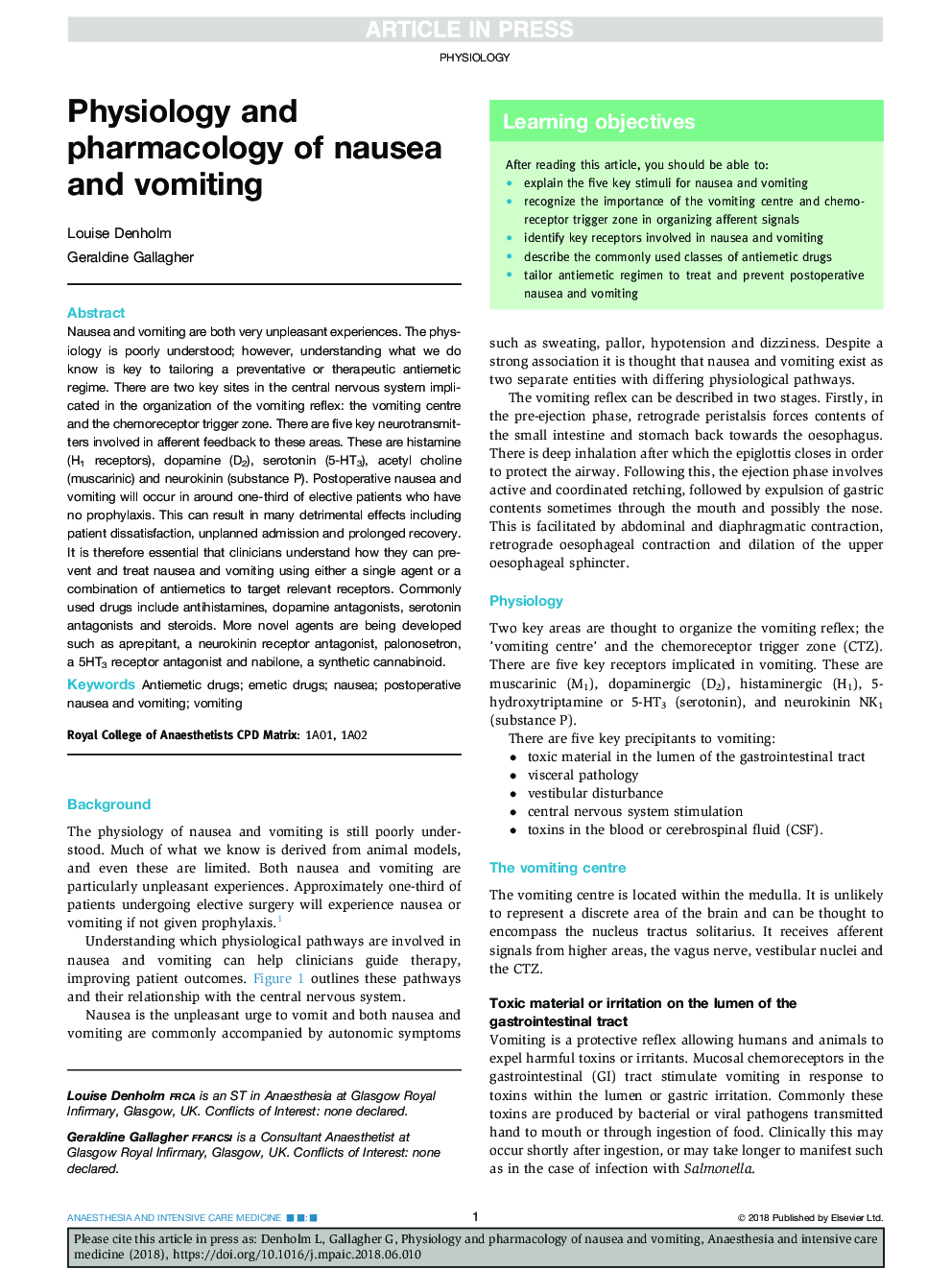| کد مقاله | کد نشریه | سال انتشار | مقاله انگلیسی | نسخه تمام متن |
|---|---|---|---|---|
| 8609848 | 1567107 | 2018 | 4 صفحه PDF | دانلود رایگان |
عنوان انگلیسی مقاله ISI
Physiology and pharmacology of nausea and vomiting
ترجمه فارسی عنوان
فیزیولوژی و فارماکولوژی تهوع و استفراغ
دانلود مقاله + سفارش ترجمه
دانلود مقاله ISI انگلیسی
رایگان برای ایرانیان
کلمات کلیدی
داروهای ضد عفونی، مواد مخدر، حالت تهوع، تهوع و استفراغ بعد از عمل، استفراغ،
موضوعات مرتبط
علوم پزشکی و سلامت
پزشکی و دندانپزشکی
بیهوشی و پزشکی درد
چکیده انگلیسی
Nausea and vomiting are both very unpleasant experiences. The physiology is poorly understood; however, understanding what we do know is key to tailoring a preventative or therapeutic antiemetic regime. There are two key sites in the central nervous system implicated in the organization of the vomiting reflex: the vomiting centre and the chemoreceptor trigger zone. There are five key neurotransmitters involved in afferent feedback to these areas. These are histamine (H1 receptors), dopamine (D2), serotonin (5-HT3), acetyl choline (muscarinic) and neurokinin (substance P). Postoperative nausea and vomiting will occur in around one-third of elective patients who have no prophylaxis. This can result in many detrimental effects including patient dissatisfaction, unplanned admission and prolonged recovery. It is therefore essential that clinicians understand how they can prevent and treat nausea and vomiting using either a single agent or a combination of antiemetics to target relevant receptors. Commonly used drugs include antihistamines, dopamine antagonists, serotonin antagonists and steroids. More novel agents are being developed such as aprepitant, a neurokinin receptor antagonist, palonosetron, a 5HT3 receptor antagonist and nabilone, a synthetic cannabinoid.
ناشر
Database: Elsevier - ScienceDirect (ساینس دایرکت)
Journal: Anaesthesia & Intensive Care Medicine - Volume 19, Issue 9, September 2018, Pages 513-516
Journal: Anaesthesia & Intensive Care Medicine - Volume 19, Issue 9, September 2018, Pages 513-516
نویسندگان
Louise Denholm, Geraldine Gallagher,
